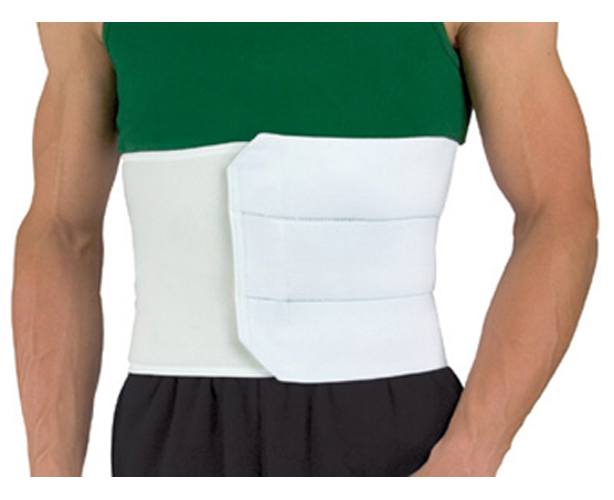
Call 1-631-753-8390 or Contact Us - We're Happy to Help!
Please choose a body region on the right for you to pin point the problem area of your body.

Shop by Condition

Shop by Brand
When recovering from surgery or dealing with back pain, your physician may recommend wearing an abdominal binder. These abdominal supports come in countless variations and cover many problems. In this guide, we will briefly analyze the different types of abdominal binders available and offer essential tips for using them.
 Also referred to as abdominal braces, binders, or supports, abdominal belts are wide compression bands typically fixed around the torso. Their most common use is to support muscles in the abdominal or back region, assist with post-surgery healing or hold drainage tubes or bandages in position.
Also referred to as abdominal braces, binders, or supports, abdominal belts are wide compression bands typically fixed around the torso. Their most common use is to support muscles in the abdominal or back region, assist with post-surgery healing or hold drainage tubes or bandages in position.
The different types of abdominal binders available in the market are classified according to the conditions they address. Here are some of the most common uses:
Post-Surgery Care
Abdominal braces are common following a major surgery such as a cesarean section, hysterectomy, tummy tuck, or other bariatric surgery. During the recovery process, these bands help compress muscles and speed up the healing process.
In addition to easing post-operative pain, they assist with mobility and reduce restlessness. Moreover, they improve breathing by straightening your posture and enhancing blood circulation, thus aiding the healing process.
Support During Maternity and Post-Pregnancy
Belly bands are an excellent aid for pregnancy-related joint and back pain. They support the lower back and your growing baby bump reducing the pain and discomfort from physical activity. If you engage in exercise during pregnancy, they assist with maintaining proper posture.
After pregnancy, wearing an abdominal band applies gentle pressure to the area, enhancing blood circulation to speed up healing. If you experience a separation of abdominal muscles (diastasis recti), the compression brings them back together while minimizing discomfort.
Recovery from Injury
An abdominal belt is also helpful if you have an injury to the spinal cord, suffer from osteoporosis, or have a slip disc. It limits motion in the affected area, therefore, reducing pain.
Furthermore, it has been shown to improve posture and enhance breathing, which greatly aids healing. Once the pain from your injury subsides, it will offer much-needed support if you have to undertake prescribed exercises to restore strength in the spine.
Tips for Proper Use of Abdominal Bands
To enjoy the benefits of using this type of support, you have to choose the right abdominal band suitable for your condition and use it right. Though you can easily buy one without a prescription, consulting a physiotherapist or other expert will help you choose the right one and know how long to use it.
Another important consideration is getting the correct size. To figure out the appropriate size, measure the widest body part the belt will cover. This should be the waist for men and the hips for women. When wrapping the band, the closures should be at the front, and though it should fit snugly, you should be able to breathe comfortably.
Even though abdominal bands can address back pain, in some instances, a doctor may prescribe back support instead. Follow your healthcare provider’s instructions when wearing the prescribed belt for the required duration.
Take Charge and Avoid the Hazards of Expired Medical Supplies
Tummy binders aid in recovery from a wide range of issues, reducing pain and discomfort and strengthening muscles. However, you can only enjoy these benefits if you make the right choice and follow the instructions for use.
Get $10 off your next order when you sign up to receive our email newsletter.*
Simply enter your email address below!
*Minimum order value of $100. Valid email address to qualify.







